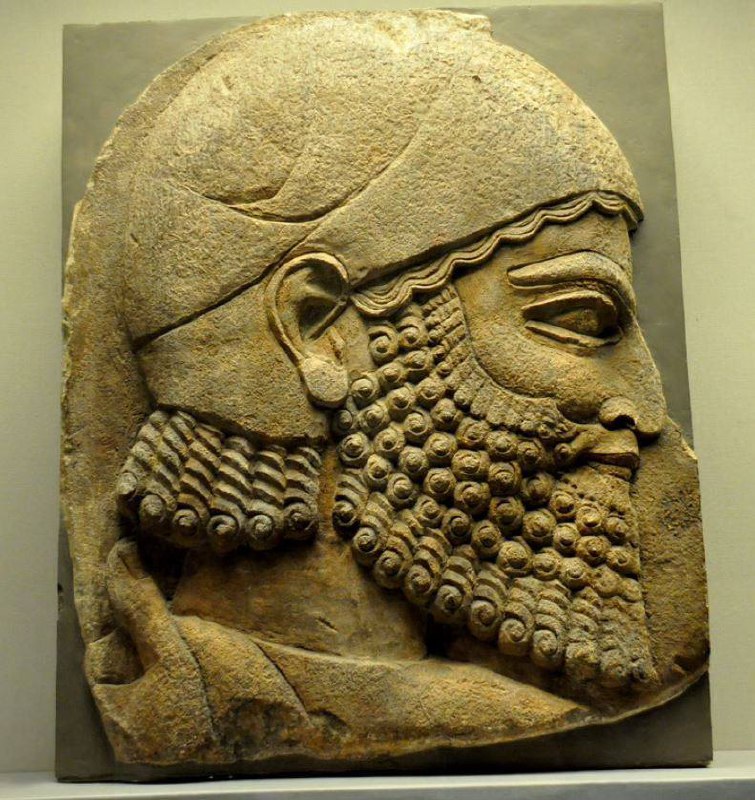🧔🏽♂️ Today is World Beard Day!
🧔🏽 Bust of Septimius Severus (reign 193–211 CE). White, fine-grained marble, modern restorations (nose, parts of the beard, draped bust). Glyptothek, Munich. Photo by Bibi Saint-Pol.
🧔🏽♂️ This alabaster bas-relief shows a head of a bearded man. The fragment was part of a larger relief which depicts a procession of tribute bearers. The man's turban and his hair style and beard suggest that the man came from the western part of the Assyrian empire, probably from modern-day Syrian coast or Turkey. From the palace of King Sargon II at Dur-Sharrukin (modern-day Khorsabad, Ninawa Governorate, Iraq), northern Mesopotamia. Neo-Assyrian period, 710-705 BCE. (The British Museum, London). Photo ©️ by Osama S.M. Amin.
@world_history
🧔🏽 Bust of Septimius Severus (reign 193–211 CE). White, fine-grained marble, modern restorations (nose, parts of the beard, draped bust). Glyptothek, Munich. Photo by Bibi Saint-Pol.
🧔🏽♂️ This alabaster bas-relief shows a head of a bearded man. The fragment was part of a larger relief which depicts a procession of tribute bearers. The man's turban and his hair style and beard suggest that the man came from the western part of the Assyrian empire, probably from modern-day Syrian coast or Turkey. From the palace of King Sargon II at Dur-Sharrukin (modern-day Khorsabad, Ninawa Governorate, Iraq), northern Mesopotamia. Neo-Assyrian period, 710-705 BCE. (The British Museum, London). Photo ©️ by Osama S.M. Amin.
@world_history
❤5👍3
tgoop.com/world_history/1217
Create:
Last Update:
Last Update:
🧔🏽♂️ Today is World Beard Day!
🧔🏽 Bust of Septimius Severus (reign 193–211 CE). White, fine-grained marble, modern restorations (nose, parts of the beard, draped bust). Glyptothek, Munich. Photo by Bibi Saint-Pol.
🧔🏽♂️ This alabaster bas-relief shows a head of a bearded man. The fragment was part of a larger relief which depicts a procession of tribute bearers. The man's turban and his hair style and beard suggest that the man came from the western part of the Assyrian empire, probably from modern-day Syrian coast or Turkey. From the palace of King Sargon II at Dur-Sharrukin (modern-day Khorsabad, Ninawa Governorate, Iraq), northern Mesopotamia. Neo-Assyrian period, 710-705 BCE. (The British Museum, London). Photo ©️ by Osama S.M. Amin.
@world_history
🧔🏽 Bust of Septimius Severus (reign 193–211 CE). White, fine-grained marble, modern restorations (nose, parts of the beard, draped bust). Glyptothek, Munich. Photo by Bibi Saint-Pol.
🧔🏽♂️ This alabaster bas-relief shows a head of a bearded man. The fragment was part of a larger relief which depicts a procession of tribute bearers. The man's turban and his hair style and beard suggest that the man came from the western part of the Assyrian empire, probably from modern-day Syrian coast or Turkey. From the palace of King Sargon II at Dur-Sharrukin (modern-day Khorsabad, Ninawa Governorate, Iraq), northern Mesopotamia. Neo-Assyrian period, 710-705 BCE. (The British Museum, London). Photo ©️ by Osama S.M. Amin.
@world_history
BY World’s History



Share with your friend now:
tgoop.com/world_history/1217
